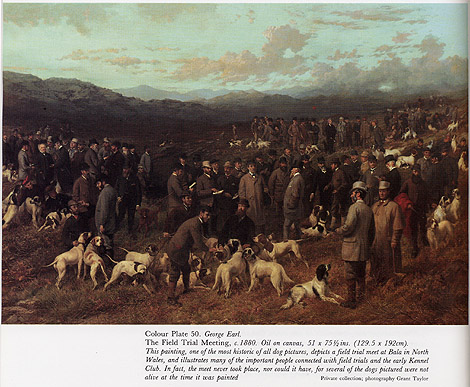
VICTORIAN ENGLAND
from Dog Painting, 1840-1940, A Social History of the Dog in Art
by William Secord
|
The dog, once essential in hunting and farming societies, now became an animal
to be exhibited, and the finer points of his anatomy compared with others of
his type. While dog shows increased in number and people were attracted to breeding
purebred dogs for show, many in the countryside continued to use the dog for
sport. |
| First | Previous |
Home | About
the WS Gallery | Current
Exhibition | New
Additions | Search Our Inventory
| Commissioning Paintings | 19th
& 20th Century Oils | Contemporary
Artists | Works
on Paper & Collectibles | Books
| Christine Merrill
| Guest book | Email
Us
All images, designs and information on this site
are fully copyrighted © 1999
and may not be reproduced of used in any form or any manner, or displayed in
any way
on any website without the express written consent of The William Secord Gallery,
Inc.
William Secord Gallery, Inc.
29 West 15th Street 4th floor
New York, NY 10011
Between Fifth and Six Avenues
www.dogpainting.com
wsecord@dogpainting.com
Tel. 212-249-0075
212-249-0896
By appointment
